-
 Bitcoin
Bitcoin $87,915.1013
4.01% -
 Ethereum
Ethereum $1,626.0336
3.05% -
 Tether USDt
Tether USDt $1.0002
0.03% -
 XRP
XRP $2.1225
3.25% -
 BNB
BNB $603.9394
2.51% -
 Solana
Solana $138.6104
1.03% -
 USDC
USDC $1.0000
0.01% -
 Dogecoin
Dogecoin $0.1612
4.65% -
 TRON
TRON $0.2431
-0.84% -
 Cardano
Cardano $0.6407
4.19% -
 Chainlink
Chainlink $13.4436
2.16% -
 Avalanche
Avalanche $20.5554
5.48% -
 UNUS SED LEO
UNUS SED LEO $9.0885
-2.49% -
 Stellar
Stellar $0.2597
7.37% -
 Toncoin
Toncoin $3.0010
0.25% -
 Shiba Inu
Shiba Inu $0.0...01257
1.68% -
 Sui
Sui $2.2420
6.60% -
 Hedera
Hedera $0.1711
4.33% -
 Bitcoin Cash
Bitcoin Cash $344.5133
3.21% -
 Polkadot
Polkadot $3.9101
1.15% -
 Hyperliquid
Hyperliquid $18.1893
5.38% -
 Litecoin
Litecoin $80.0892
5.05% -
 Bitget Token
Bitget Token $4.4777
1.97% -
 Dai
Dai $1.0000
0.00% -
 Ethena USDe
Ethena USDe $0.9994
0.01% -
 Pi
Pi $0.6362
1.91% -
 Monero
Monero $214.2887
-0.67% -
 Uniswap
Uniswap $5.4298
4.03% -
 Pepe
Pepe $0.0...07950
6.54% -
 Aptos
Aptos $5.1342
2.79%
How to set stop-profit and stop-loss in OKX contracts?
Master OKX contract trading risk with stop-loss and take-profit orders; learn to set market, limit, stop-market, and stop-limit orders, understanding their nuances for optimal profit and loss management.
Mar 18, 2025 at 11:19 pm
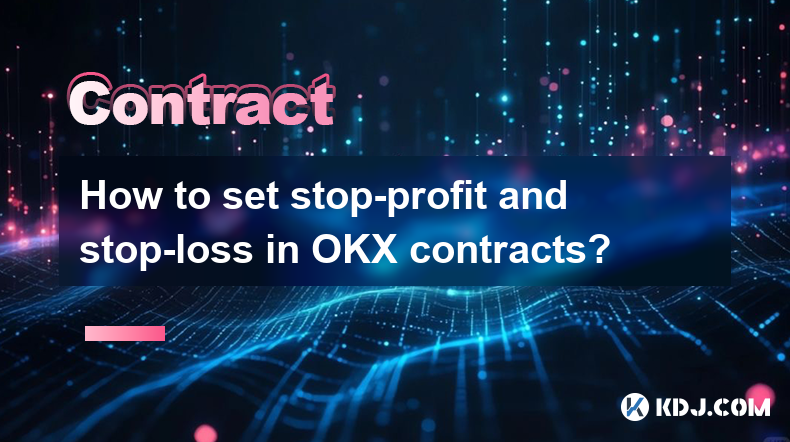
Key Points:
- Understanding the importance of stop-loss and take-profit orders in mitigating risk and securing profits in OKX contract trading.
- Step-by-step instructions on how to set stop-loss and take-profit orders on the OKX platform for various contract types.
- Exploring different order types available on OKX (market, limit, stop-market, stop-limit) and their suitability for different trading strategies.
- Addressing common concerns and potential issues when setting stop-loss and take-profit orders.
How to Set Stop-Profit and Stop-Loss in OKX Contracts?
Trading cryptocurrency contracts on platforms like OKX involves significant risk. To manage this risk effectively, utilizing stop-loss and take-profit orders is crucial. These orders automatically execute when the market price reaches a predetermined level, helping protect your capital and lock in profits. Let's explore how to set these orders on OKX.
Understanding Stop-Loss and Take-Profit Orders
A stop-loss order automatically sells your contract position when the price falls to a specified level, limiting potential losses. Conversely, a take-profit order automatically closes your position when the price rises to a predetermined level, securing your profits. These orders are essential for risk management in volatile markets.
Setting Stop-Loss and Take-Profit Orders on OKX
The process for setting these orders varies slightly depending on whether you're using the web or mobile app, but the core functionality remains the same. First, navigate to your open positions or the contract you wish to manage.
- Open the Contract Details: Locate the specific contract you want to modify and click to open its details.
- Place the Order: You'll find options to set a stop-loss and take-profit price. Enter your desired price levels for both.
- Order Type Selection: OKX offers various order types: Market, Limit, Stop-Market, and Stop-Limit. Market orders execute immediately at the current market price, while Limit orders execute only when the price reaches your specified level. Stop-Market orders become market orders once the stop price is triggered, and Stop-Limit orders become limit orders once the stop price is triggered. Choosing the correct order type is crucial. For stop-loss, Stop-Market is generally preferred for its speed of execution. For take-profit, a Stop-Limit order might be beneficial to secure a slightly better price.
- Quantity Specification: Specify the quantity of contracts you wish to sell at the stop-loss or buy at the take-profit.
- Confirm and Submit: Review all details before confirming and submitting your orders. OKX will typically provide a confirmation screen.
Different Order Types Explained
Understanding the nuances of each order type is vital for effective risk management. Let’s break them down further:
- Market Orders: These orders execute immediately at the best available price. They're fast but may not always get you the exact price you want.
- Limit Orders: These orders only execute if the market price reaches your specified price or better. They offer price certainty but may not execute if the price doesn't reach your limit.
- Stop-Market Orders: These orders become market orders once the stop price is hit. They guarantee execution but may result in a slightly less favorable price than anticipated due to market volatility.
- Stop-Limit Orders: These orders become limit orders once the stop price is hit. They offer better price control than Stop-Market orders but may not execute if the price doesn't reach your limit after the stop price is triggered.
Managing Stop-Loss and Take-Profit Orders
Once your orders are placed, you can monitor their status within your OKX account. You can modify or cancel them before they're triggered, providing flexibility in adapting to changing market conditions. Remember that slippage can occur, meaning the execution price may differ slightly from your specified price due to market volatility.
Advanced Strategies and Considerations
More sophisticated traders might employ trailing stop-loss orders, which adjust automatically as the price moves favorably. OKX may offer this feature, check their platform documentation for details. Furthermore, consider the volatility of the cryptocurrency you're trading when setting your stop-loss and take-profit levels. Wider stop-loss levels are generally recommended for more volatile assets.
Common Questions:
Q: What happens if my stop-loss order doesn't execute? A: This can happen due to slippage or insufficient liquidity at the time your stop price is hit. It's crucial to set realistic stop-loss levels and consider the market conditions.
Q: Can I modify or cancel my stop-loss and take-profit orders? A: Yes, you can usually modify or cancel these orders before they are triggered through your OKX account.
Q: Are there fees associated with stop-loss and take-profit orders? A: Generally, there aren't additional fees specifically for using these order types, but standard trading fees still apply when the order executes.
Q: How do I choose the right stop-loss and take-profit levels? A: This depends on your risk tolerance, trading strategy, and the volatility of the asset. Consider factors like support and resistance levels, recent price movements, and your overall trading goals.
Q: What is slippage, and how does it affect my stop-loss and take-profit orders? A: Slippage is the difference between the expected execution price and the actual execution price of your order. It can be caused by market volatility and low liquidity, potentially leading to less favorable outcomes than anticipated.
Disclaimer:info@kdj.com
The information provided is not trading advice. kdj.com does not assume any responsibility for any investments made based on the information provided in this article. Cryptocurrencies are highly volatile and it is highly recommended that you invest with caution after thorough research!
If you believe that the content used on this website infringes your copyright, please contact us immediately (info@kdj.com) and we will delete it promptly.
- As the Crypto Market Evolves, XRP and Dogecoin Are Back in the Spotlight
- 2025-04-22 00:00:44
- Onchain social media platform Zora said its ZORA token will go live
- 2025-04-22 00:00:44
- Bitcoin Eyes $88,000 Breakout as Safe-Haven Narrative Gains Steam
- 2025-04-21 23:55:12
- As the Cryptocurrency Market Begins to Recover and Bitcoin Moves Closer to the $90,000 Mark, Investor Interest Is Gradually Returning
- 2025-04-21 23:55:12
- Blurring the Lines Between Decentralized Finance and Traditional Finance, Ripple's XRP Ledger (XRPL) Is at the Center of a New Attempt to Integrate Blockchain into the Heart of Institutional Trading
- 2025-04-21 23:50:13
- MicroStrategy Adds Another $555M Bitcoin Buy to Its Portfolio as BTC Trades Near $85K
- 2025-04-21 23:50:13
Related knowledge
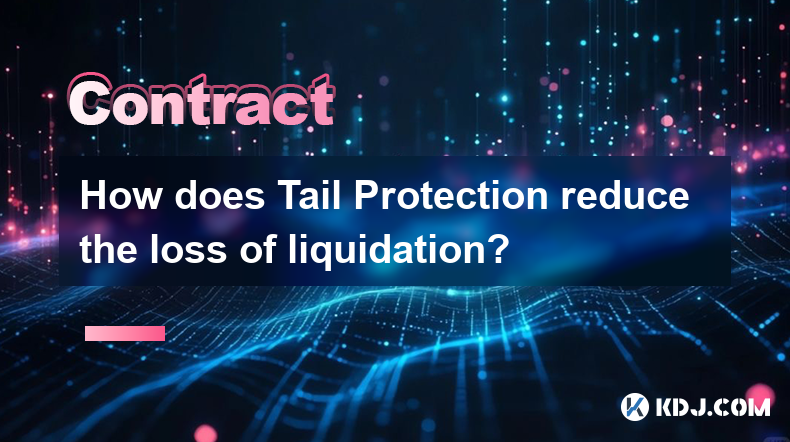
How does Tail Protection reduce the loss of liquidation?
Apr 11,2025 at 01:50am
Introduction to Tail Protection in CryptocurrencyTail Protection is a mechanism designed to mitigate the risks associated with liquidation in cryptocurrency trading. Liquidation occurs when a trader's position is forcibly closed by the exchange due to insufficient margin to cover potential losses. This often happens in leveraged trading, where traders b...
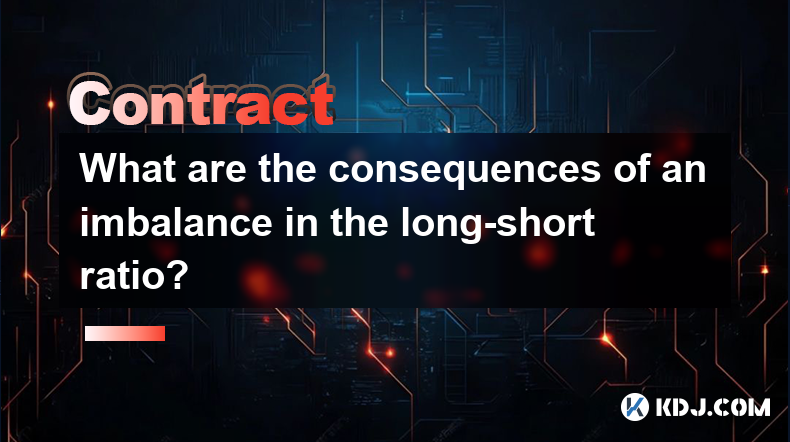
What are the consequences of an imbalance in the long-short ratio?
Apr 13,2025 at 02:50pm
The long-short ratio is a critical metric in the cryptocurrency trading world, reflecting the balance between bullish and bearish sentiments among traders. An imbalance in this ratio can have significant consequences on the market dynamics, affecting everything from price volatility to trading strategies. Understanding these consequences is essential fo...

How to judge the market trend by the position volume?
Apr 11,2025 at 02:29pm
Understanding how to judge the market trend by position volume is crucial for any cryptocurrency trader. Position volume, which refers to the total number of open positions in a particular cryptocurrency, can provide valuable insights into market sentiment and potential price movements. By analyzing this data, traders can make more informed decisions ab...

Why does a perpetual contract have no expiration date?
Apr 09,2025 at 08:43pm
Perpetual contracts, also known as perpetual futures or perpetual swaps, are a type of derivative product that has gained significant popularity in the cryptocurrency market. Unlike traditional futures contracts, which have a fixed expiration date, perpetual contracts do not expire. This unique feature raises the question: why does a perpetual contract ...
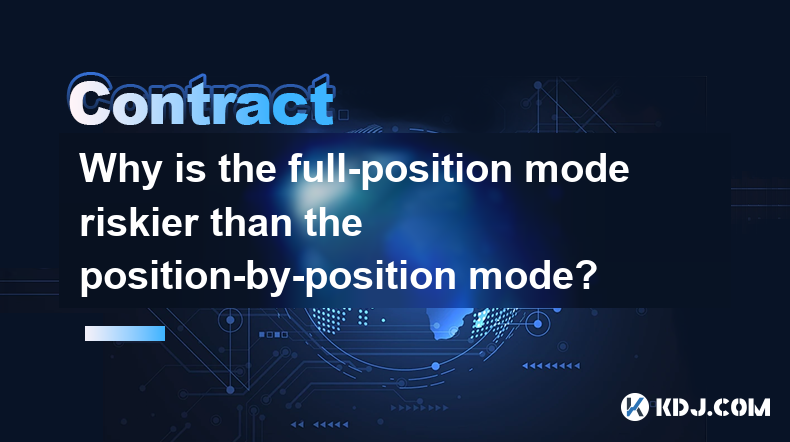
Why is the full-position mode riskier than the position-by-position mode?
Apr 13,2025 at 03:42pm
Why is the Full-Position Mode Riskier Than the Position-by-Position Mode? In the world of cryptocurrency trading, the choice between full-position mode and position-by-position mode can significantly impact the risk profile of a trader's portfolio. Understanding the differences between these two modes is crucial for making informed trading decisions. Th...
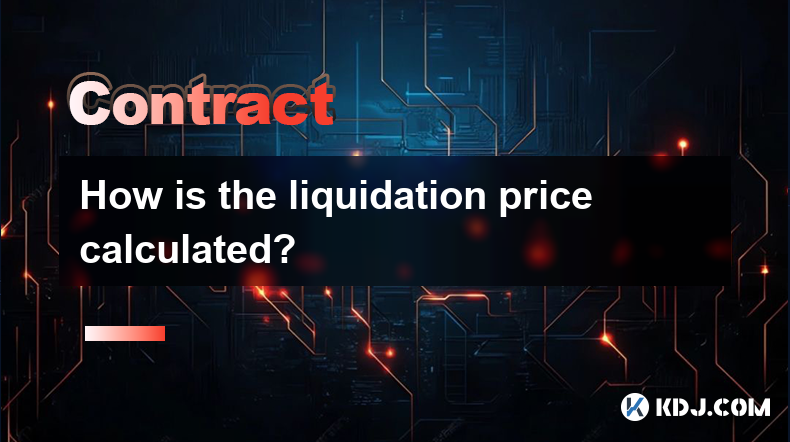
How is the liquidation price calculated?
Apr 12,2025 at 01:35am
Introduction to Liquidation PriceLiquidation price is a critical concept in the world of cryptocurrency trading, particularly when dealing with leveraged positions. Understanding how this price is calculated is essential for traders to manage their risk effectively. The liquidation price is the point at which a trader's position is forcibly closed by th...

How does Tail Protection reduce the loss of liquidation?
Apr 11,2025 at 01:50am
Introduction to Tail Protection in CryptocurrencyTail Protection is a mechanism designed to mitigate the risks associated with liquidation in cryptocurrency trading. Liquidation occurs when a trader's position is forcibly closed by the exchange due to insufficient margin to cover potential losses. This often happens in leveraged trading, where traders b...

What are the consequences of an imbalance in the long-short ratio?
Apr 13,2025 at 02:50pm
The long-short ratio is a critical metric in the cryptocurrency trading world, reflecting the balance between bullish and bearish sentiments among traders. An imbalance in this ratio can have significant consequences on the market dynamics, affecting everything from price volatility to trading strategies. Understanding these consequences is essential fo...

How to judge the market trend by the position volume?
Apr 11,2025 at 02:29pm
Understanding how to judge the market trend by position volume is crucial for any cryptocurrency trader. Position volume, which refers to the total number of open positions in a particular cryptocurrency, can provide valuable insights into market sentiment and potential price movements. By analyzing this data, traders can make more informed decisions ab...

Why does a perpetual contract have no expiration date?
Apr 09,2025 at 08:43pm
Perpetual contracts, also known as perpetual futures or perpetual swaps, are a type of derivative product that has gained significant popularity in the cryptocurrency market. Unlike traditional futures contracts, which have a fixed expiration date, perpetual contracts do not expire. This unique feature raises the question: why does a perpetual contract ...

Why is the full-position mode riskier than the position-by-position mode?
Apr 13,2025 at 03:42pm
Why is the Full-Position Mode Riskier Than the Position-by-Position Mode? In the world of cryptocurrency trading, the choice between full-position mode and position-by-position mode can significantly impact the risk profile of a trader's portfolio. Understanding the differences between these two modes is crucial for making informed trading decisions. Th...

How is the liquidation price calculated?
Apr 12,2025 at 01:35am
Introduction to Liquidation PriceLiquidation price is a critical concept in the world of cryptocurrency trading, particularly when dealing with leveraged positions. Understanding how this price is calculated is essential for traders to manage their risk effectively. The liquidation price is the point at which a trader's position is forcibly closed by th...
See all articles






















































































